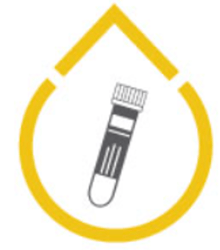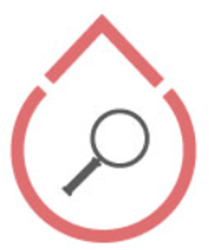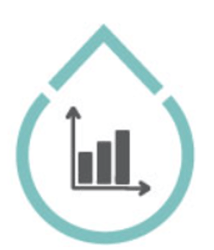TREAT-Lab
A diagnostic stewardship tool that identifies patients for whom rapid diagnostics may be cost-effective.
TREAT-Lab
TREAT-Lab is a tool for the clinical microbiologist; supporting diagnostic- and antimicrobial stewardship initiatives in the microbiology laboratory. The core of TREAT-Lab is its proprietary risk-prediction algorithm: a model that estimates the risk of death and the likelihood of a positive microbiological test. The risk-prediction algorithm uses a Causal Probabilistic Network (CPN) model of the patient’s inflammatory response. CPN technology provides significant advantages over current risk- and severity scoring methods, notably its ability to handle missing data. Sound probabilistic reasoning is provided based on the available evidence. Additionally, TREAT-Lab provides dashboard, analytical and statistical tools.

Risk Assessment
Emerging techniques for rapid sepsis diagnosis provide an opportunity for etiological diagnosis one to two days earlier than conventional methods. Identification of a causative pathogen and its susceptibility and/or resistance profile greatly increases the odds of the patient receiving appropriate antimicrobial therapy. However, most rapid diagnostics are too expensive to be used for all patients suspected of infection outside the Intensive Care Unit. Risk-based stratification, such as that provided by TREAT-Lab, can be used to ensures that more patients who need rapid diagnostics are able to benefit from their use.
Risk assessment with TREAT-Lab provides an opportunity to streamline the diagnostic work-up and treatment of the potentially septic patient. TREAT-Lab uses only readily available information automatically acquired from the patient’s electronic health record: vital signs, blood gases, and common laboratory findings.
There are two main decision points for whether rapid diagnostics should be used: in the clinical setting at the time of blood culture, and in the laboratory when choosing how to handle a positive blood culture bottle. TREAT-Lab supports both these decisions, providing a risk-assessment to be used by the clinician when ordering direct blood diagnostics, and by the laboratory technician when allocating positive blood cultures to the optimal workflow.

Worklist
The Worklist supplies the laboratory technicians with an invaluable quality assurance tool. It is a dashboard providing an overview of the status of each sample and possible actions to initiate. It gives the opportunity to review and control each step of the process of identifying for which samples rapid antimicrobial sensitivity testing is indicated, based on locally configured rules. Through the Worklist, TREAT-Lab provides an overview of all blood cultures analyzed in the laboratory. The Worklist dashboard shows the current status of each sample and an evaluation of the patient’s risk level. Risk-based stratification provides an opportunity to tailor the diagnostic work-up in the laboratory and optimize resource usage and patient care. The Worklist gives a range of customized actions based on the context of the individual sample: the risk level, current location and current status. If the system is able to access current antimicrobial treatments, it will also act as an antimicrobial stewardship tool, providing advice on escalation or de-escalation of treatment.

Inspection Tool
TREAT-Lab integrates seamlessly into a wide range of hospital IT systems, providing an elegant solution to display the temporal course of all infection-relevant information. The Inspection Tool is aimed at the clinical microbiologist, allowing microbiological findings to be set into context when giving advice to the treating physician. TREAT-Lab provides a printable one-page overview of all information relevant for determining the current infection status of the patient. This includes vital parameters, microbiological findings, hematology, blood gases and clinical chemistry. If the system is able to access the patient’s treatment history, their current and previous antibiotic regimens will also be shown.

Reporting Tool
The collection of structured data provides an opportunity for tracking and monitoring key performance measures. The Reporting Tool presents a range of statistics and filter tools, allowing the generation of custom reports and access to important data that can feed back into decision making. One of the true benefits of having coded clinical information is that it can be linked to the vast knowledge within the domain of evidence-based medicine and be used for statistical- and research purposes. The Reporting Tool gives the user access to a range of statistics; useful for both performance tracking and infection surveillance. TREAT-Lab tracks e.g. laboratory throughput and quality measures along with the pathogen distributions. Plotting tools enable the user to view information such as temporal trends in the numbers of gram positive and gram negative isolates, resistance rates for E. coli over the last six weeks stratified by region and more.